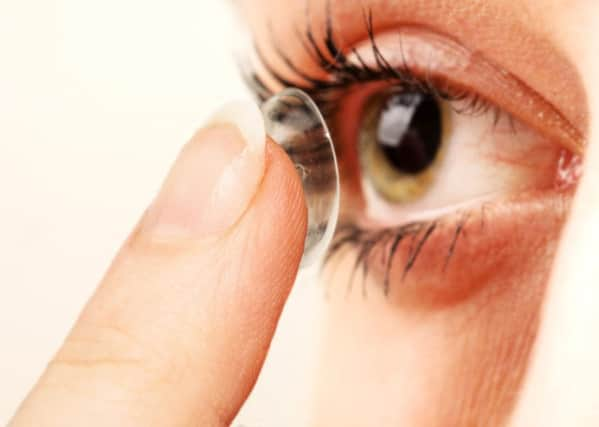'˜Dry eyes' cure for contact lens wearers?


When contact lenses work best, wearers forget forget they are on their eyes.
But after too many hours of wear, the lenses and the wearer’s eyes dry out, causing irritation that might outweigh the convenience of contacts.
Advertisement
Hide AdAdvertisement
Hide AdNow researchers hope to alleviate that pain by both advancing the understanding of how natural tears keep our eyes comfortable, and developing a machine for designing better contact lenses.
The work was inspired in part by a scientist’s own dry eyes.
Doctor Saad Bhamla, of Stanford University in the US, said: “As a student, I had to stop wearing lenses due to the increased discomfort
“Focusing my PhD thesis to understand this problem was both a personal and professional goal.”
Advertisement
Hide AdAdvertisement
Hide AdThe researchers suspected that most of the discomfort arises from the break up of the tear film, a wet coating on the surface of the eye, during a process called dewetting.
They found that the lipid layer, an oily coating on the surface of the tear film, protects the eye’s surface in two important ways - through strength and liquid retention.
By mimicking the lipid layer in contact construction, millions of people could avoid ocular discomfort.
Dr Bhamla and his colleagues outlined two functions of the lipid layer. One is to provide mechanical strength to the tear film. Lipids in this layer have viscoelastic properties that allow them to stretch and support the watery layer beneath them.
Advertisement
Hide AdAdvertisement
Hide AdHe likened the protective lipid layer to a swimming pool cover. You can’t run on the open water, but even a thin tarp can provide mechanical strength to support a person’s weight.
Dr Bhamla said: “You will sometimes see the guards at the Stanford Avery pool run over the surface of the covered pool.
“The mechanical structure is very thin, but it protects the whole bulk of the liquid. If the swimming pool is shrunk to 1/100th the width of a hair, it is a good representation of the tear film with a lipid layer replacing the tarp.”
The lipid layer also prevents the tear film from evaporating away. Eyes are roughly 95 Fahrenheit (35 Celsius), which is usually warmer than the ambient air. Like any liquid on a hot surface, the eye is constantly heating its liquid coating and losing moisture to the air.
Advertisement
Hide AdAdvertisement
Hide AdProf Gerald Fuller said: “We recognised early on that the fluid mechanical responses of the lipid layer were just as important as the conventional view that its role was to control evaporative loss.
“And it’s been gratifying to realize that the combined role of these two forces is now accepted.”
He said the key to producing comfortable contact lenses involves designing ones that don’t destabilise the tear film.
Dr Bhamla added: “Some people are studying contact lenses by holding them up to a light, dipping them in water, and looking at them to see if the tear film breaks up.
“We felt we could definitely do better than that.”
Advertisement
Hide AdAdvertisement
Hide AdTo solve the problem, Dr Bhamla and Prof Fuller built a device that mimics the surface of the eye.
The machine, called the Interfacial Dewetting and Drainage Optical Platform or i-DDrOP, reproduces a tear film on the surface of a contact lens.
It allows both scientists and manufacturers to systematically handle the range of variables that affect the tear film - including temperature, a variety of substances, humidity and the way gravity acts along a curved surface.